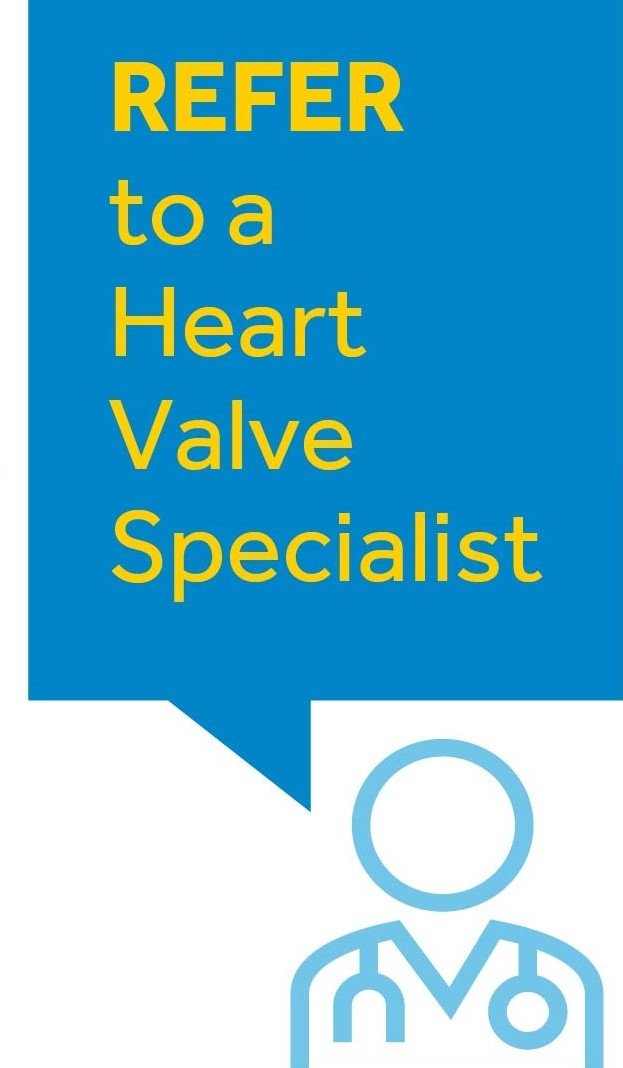A range of approaches is needed to manage mental health presentations. In this article, specialist GP Sophie Jadwiga Ball describes two tools that can be employed within a GP consultation and provides the evidence-based theory behind their use. She also presents numerous examples to demonstrate how you can apply these tools in practice
Early diagnosis and treatment can mean better outcomes
Early diagnosis and treatment can mean better outcomes

Following the onset of severe symptomatic aortic stenosis (SSAS), 50 per cent of patients die within one to two years of diagnosis
Intervention should be considered as soon as the patient develops symptoms, with a viable option (TAVI or SAVR) being performed without delay4.
SSAS isn't always easy to diagnose, due to the following factors:
- Heart murmurs go undetected.3
- Referrals are delayed or too late.3
- Echocardiogram findings are misclassified due to complex cardiac anatomy.3
- Patients don't recognise or report their symptoms.3
It is difficult to predict which patients will progress rapidly. Therefore, appropriate and relevant follow-up is essential.
Watch Suzanne's journey with the TAVI (Transcatheter Aortic Valve Implantation) procedure and her treatment and diagnosis of Aortic Stenosis. Watch the full 3-minute video here.
Download the Aortic Stenosis Diagnostic Pathway and Risk-Assessment Checklist to aid your patient examination. When evaluating patients with a murmur, the criteria listed in the checklist are deemed high risk and favour further evaluation in an expedited time frame.
Download the Aortic Stenosis Risk Assessment Checklist HERE.
WHAT IS TAVI?
A transcatheter aortic valve implantation procedure (TAVI) is less invasive than open heart surgery. The entire procedure typically takes approximately 1–2 hours. The heart team will determine whether the patient should have a mild sedative or general anaesthesia. Find out more by clicking HERE.
WHAT IS SAVR?
In most cases, heart valve replacement is an open-heart operation. This means the surgeon opens the chest and heart to remove the damaged valve. In some cases, the valve can be replaced through a small incision near the breastbone (sternum) or under the right chest muscle. Find out more by clicking HERE.
Early diagnosis and treatment leads to increased survival rates. Learn more about the prevalence of Aortic Stenosis to help you with your diagnosis.
Learn more here.
This information is for healthcare professionals only.
REFERENCES
- Maganti, Kameswari et al. Valvular heart disease: diagnosis and management. Mayo Clinic proceedings vol. 85,5 (2010): 483-500. doi:10.4065/mcp.2009.0706
- Grimard, Brian H. et al. Aortic Stenosis: Diagnosis and Treatment. Am Fam Physician. 2016 Mar 1;93(5):371-378.
- Cian P. McCarthy, MB, BCh, BAO, Dermot Phelan, MD, PhD and Brian Griffin, MD Cleveland Clinic Journal of Medicine April 2016, 83 (4) 271-280; DOI: https://doi.org/10.3949/ccjm.83a.15069
- De Sciscio, P., Brubert, J. and De Sciscio, M. Aortic Stenosis in Australia : disease prevalence and patient eligibility for aortic valve replacement. Heart and Lung Circulation. Jan 01, 2015, vol. 24(3)






